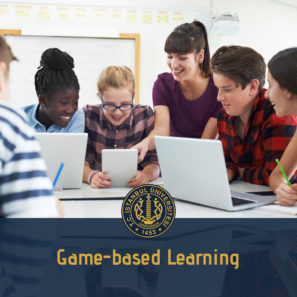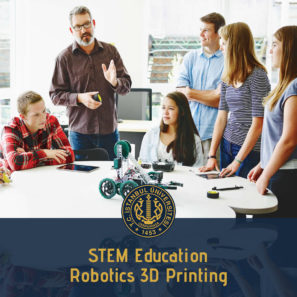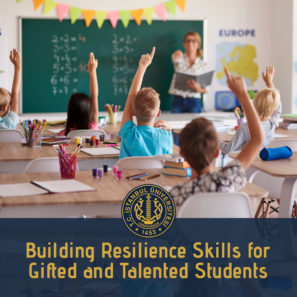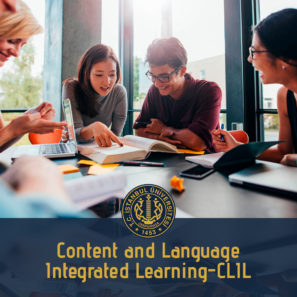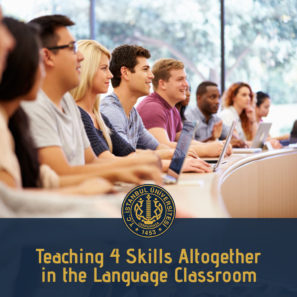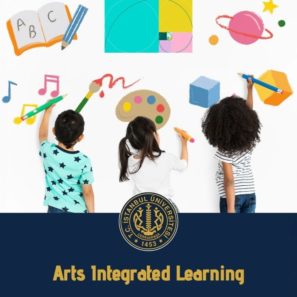Preparatıon:
The participants of the course are invited to participate in practice-based exploration and design activities throughout the sessions. The group presentation of the collaboratively designed tasks that aim the development of different skills at varying levels will be among the requirements of the course. The participants might find it useful to read some of the below listed reading material before joining the training as well:
- Mayer, R. E (2014). Multimedia learning. Cambridge University Press.
- Counts, E. L. (2003). Multimedia Design and Production for Students and Teachers. Boston: Allyn & Bacon.
- Alessi, M. S. & Trollip, S. R. (2001). Multimedia for learning. 3rd Ed. Allyn & Bacon. Massachusetts ss. 407 – 432.
Other resources such as articles etc. will be shared during the course sessions.
Course descrıptıon
This course covers topics that utilize contemporary methods for digitally designing multimedia. Participants will learn how to digitally create multimedia and prepare it for various end products including print and web. Topics will include digital image editing, 2D computer animation, and Web 2.0 tools. Students will have the opportunity to apply and demonstrate proficiency in concepts learned in class by engaging in projects and activities assigned to give them experience using various forms of media to solve real-world problems.
Methodology
The course involves practical skill-building activities to help you to design multimedia projects. We embrace collaboratively working methods that foster mutual learning and cooperation among participants. The focus of the training is on learning in an interactive and international environment applying knowledge of task types and task design to the real contexts and/or in the classroom. A wide array of pedagogical methods based upon experiential training, group and peer activities, learning-by-doing and best practices’ exchange are employed throughout the course.
Learnıng Outcomes
The aim of this course is to examine the definition and characteristics of multimedia learning, the theory of multimedia learning, and the reflection of multimedia principles on design. In addition, it is also aimed to design and develop all kinds of multimedia applications that can be used in computer-based education activities.
At the end of this course participants are expected to:
- Explain the concepts related to multimedia design principles
- Tell about the usage areas of multimedia in the learning and teaching process
- Associate multimedia design principles with material design principles
- Describe the criteria for choosing and developing multimedia design principles
- Recognize the multimedia design development environments
- Describe the screen design process and principles in multimedia applications
- Create animation, add / edit pictures, sound, and videos on a multimedia design application
- Provide user interaction
- Evaluate and publish multimedia applications
Follow-up
Your participation in the live lectures is very important in terms of understanding the theoretical foundations of the course and developing multimedia applications. The participants are expected to design multimedia materials on selected Web 2.0 tools.
Specıfıcs
This standard daily program might be personalized on participants’ needs and professional profiles.
Course Venue
Istanbul University – Cerrahpaşa Continuing Education Center
Course Date
| Date | Course Times | Course Content |
| Day1 |
|
|
| Day2 |
|
|
| Day3 |
|
|
| Day4 |
|
|
| Day5 |
|
INSTRUCTORS
Program Coordinator
Instructors
The number of partIcIpants
5 – 15 participants
CertIfIcate
Digital certificate.
Type of EducatIon - Place
Face to Face or Distance Education
PAYMENT
You can choose one of the following payment methods EFT and Credit Card.
BANK ACCOUNT INFORMATION
Euro Account
Banka Adı (Bank Name): TC Halk Bankası
Şube Adı (Branch Name): Cerrahpaşa
Hesap No (Account ): 0058 1000 60
SWIFT: TRHBTR2A
Explanation: İstanbul Üniversitesi Cerrahpaşa Sürekli Eğitim MerkeziEUR İBAN: TR51 0001 2001 5300 0058 1000 60
İlgili ürünler
Erasmus+ KA1 Courses
Erasmus+ KA1 Courses
Erasmus+ KA1 Courses
Erasmus+ KA1 Courses
Erasmus+ KA1 Courses
Exploring the educational leadership as a significant antecedent of organizational behavior
Erasmus+ KA1 Courses
Erasmus+ KA1 Courses
Erasmus+ KA1 Courses


